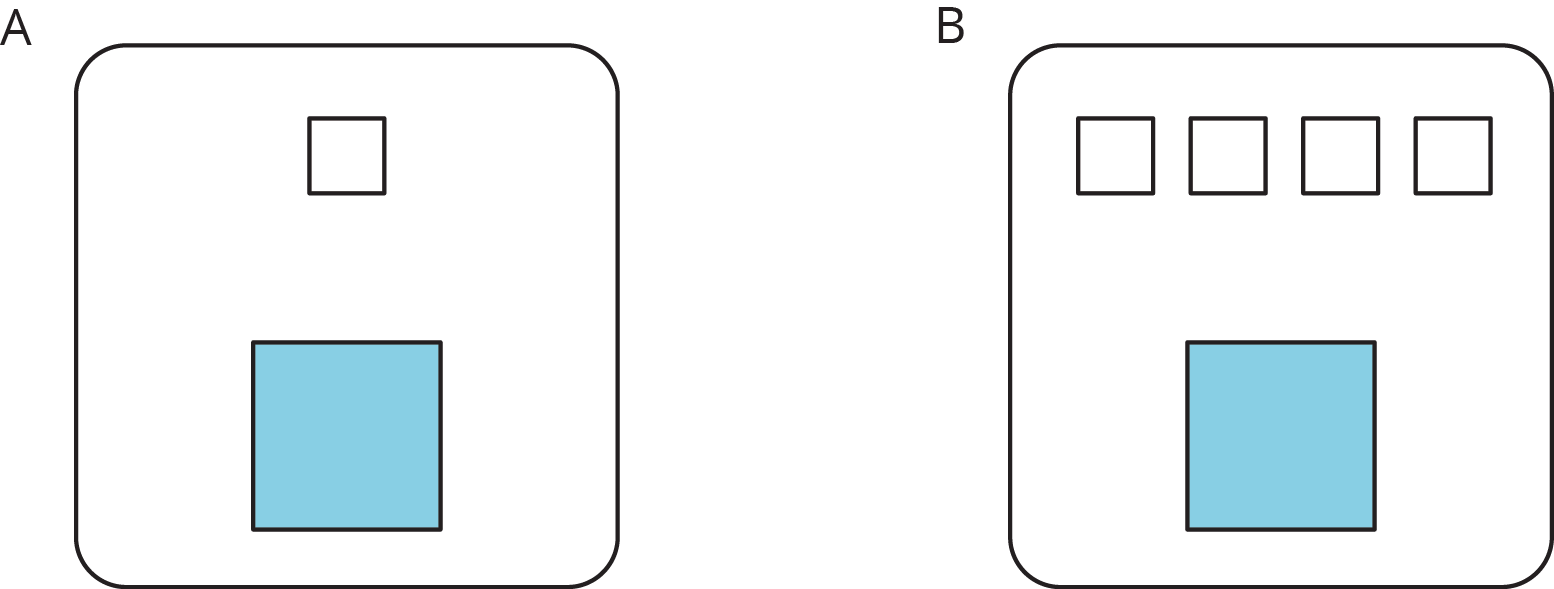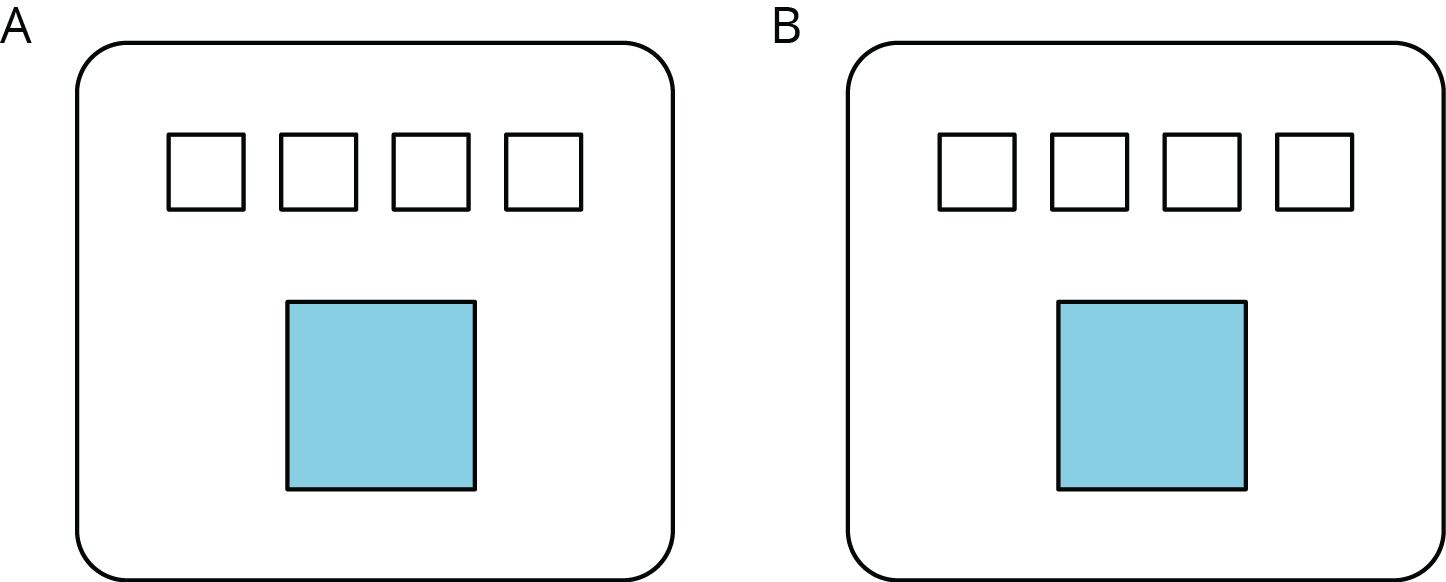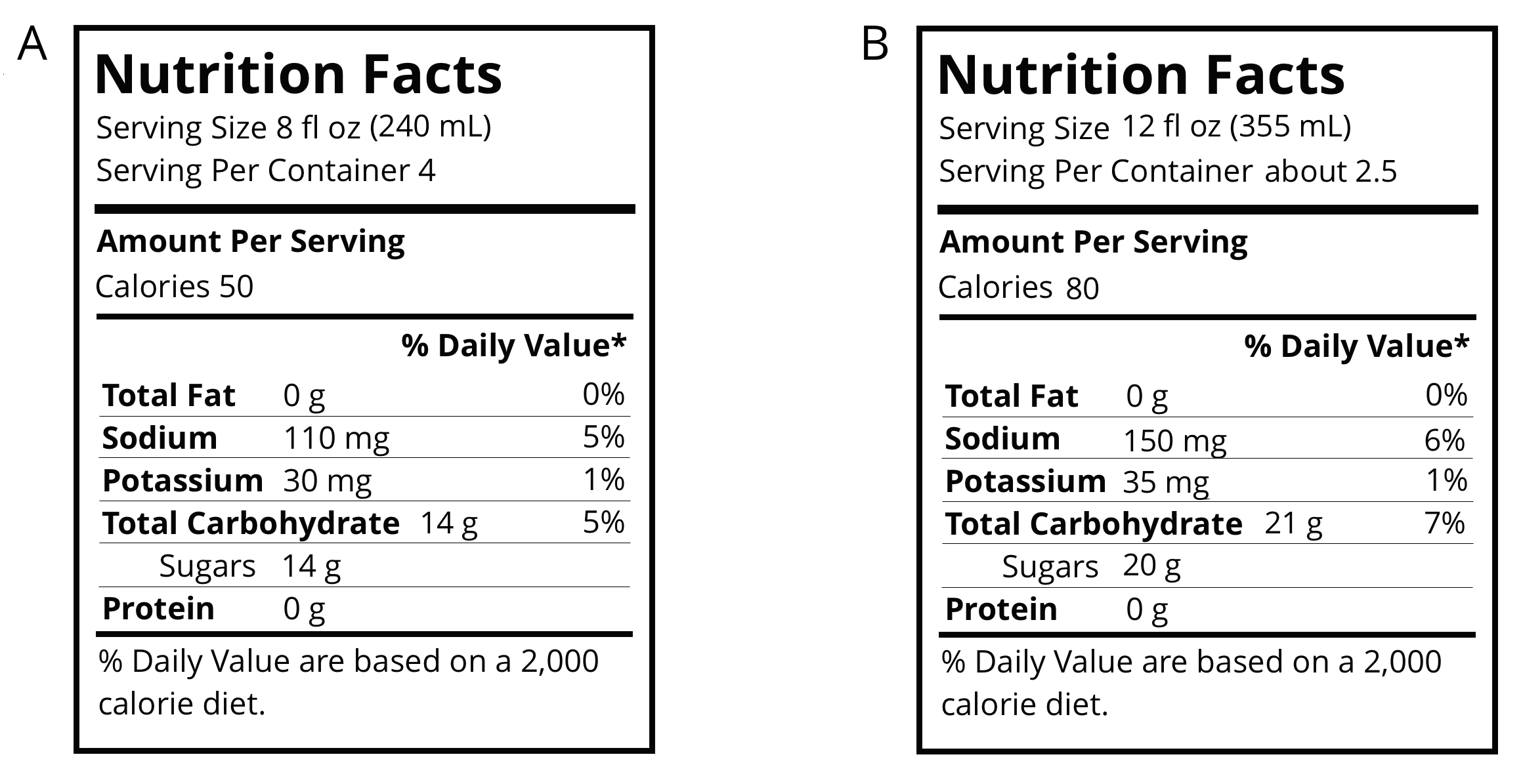Lesson 3
Recipes
3.1: Flower Pattern (5 minutes)
Warm-up
The purpose of this warm-up is to quickly remind students of different ways to write ratios. They also have an opportunity to multiply the number of each type of shape by 2 to make two copies of the flower, which previews the process introduced in this lesson for making a double batch of a recipe.
Launch
Arrange students in groups of 2. Ensure students understand there are 6 hexagons, 2 trapezoids, and 9 triangles in the picture, and that their job is to write ratios about the numbers of shapes. Give 2 minutes of quiet work time and then invite students to share their sentences with their partner, followed by whole-class discussion.
Student Facing
This flower is made up of yellow hexagons, red trapezoids, and green triangles.

- Write sentences to describe the ratios of the shapes that make up this pattern.
- How many of each shape would be in two copies of this flower pattern?
Student Response
For access, consult one of our IM Certified Partners.
Anticipated Misconceptions
Students might get off track by attending to the area each shape covers. Clarify that this task is only concerned with the number of each shape and not the area covered.
Activity Synthesis
Invite a student to share a sentence that describe the ratios of shapes in the picture. Ask if any students described the same relationship a different way. For example, three ways to describe the same ratio are: The ratio of hexagons to trapezoids is \(6:2\). The ratio of trapezoids to hexagons is 2 to 6. There are 3 hexagons for every trapezoid.
Ask a student to describe why two copies of the picture would have 12 hexagons, 4 trapezoids, and 18 triangles. If no student brings it up, be sure to point out that each number in one copy of the picture can be multiplied by 2 to find the number of each shape in two copies.
3.2: Powdered Drink Mix (15 minutes)
Activity
In this activity, three student volunteers participate in a taste test of two drink mixtures. Mixture A is made with 1 cup of water and 1 teaspoon of drink mix. Mixture B is made with 1 cup of water and 4 teaspoons of drink mix. The taste testers match diagrams with each mixture and explain their reasoning.
After the taste test, in front of students, recreate mixture A (1 cup water with 1 teaspoon of drink mix) and mixture B (1 cup water with 4 teaspoons of drink mix). Ask students to describe how the diagrams correspond with these mixtures. Then, conduct a demonstration in which 3 teaspoons of drink mix are added to Mixture A and a new diagram is drawn. Once Mixture A and Mixture B both contain one cup of water and 4 teaspoons of drink mix, both mixtures are combined in a third container labeled Mixture C.
As part of their work on the task, students reason that this combined mixture tastes the same as each individual batch. Students then conclude that a mixture containing two batches tastes the same as the mixture that contains just one batch, because mixing two things together that taste the same will produce a mixture that tastes the same. They should also note that each ingredient was doubled in the mixture.
Launch
Display the diagram for all to see:

Taste test: Recruit three volunteers for a taste test. Give each volunteer two unmarked cups—one each of a small amount of Mixture A and Mixture B. Explain that their job is to take a tiny sip of each sample, match the diagrams to the samples, and explain their matches.
Demonstration: Conduct a dramatic demonstration of mixing powdered drink mix and water. Start with two empty containers labeled A and B. To Container A, add 1 cup of water and 1 teaspoon of drink mix. To Container B, add 1 cup of water and 4 teaspoons of drink mix. Mix them both thoroughly. The first diagram should still be displayed.
Discuss:
- Which mixture has a stronger flavor? (B has more drink mix in the same quantity of water).
- How can we make Mixture A taste like Mixture B? (Put 3 more teaspoons of drink mix into Container A.)
Add 3 more teaspoons of drink mix to Container A. Display a new diagram to represent the situation:

Discuss:
- Describe the ratio of ingredients that is now in Container A. (The ratio of cups of water to teaspoons of drink mix is \(1:4\).)
- Describe the ratio of ingredients that is in Container B. (The ratio of cups of water to teaspoons of drink mix is also 1 to 4.)
- How do you think they compare in taste? (They taste the same. If desired, you can have volunteers verify that they taste the same, but this might not be necessary.)
Pour the contents of both A and B into a larger container labeled C and mix them thoroughly.
Discuss:
- How would the taste of Mixture C compare to the taste of Mixture A and Mixture B? (The new mixture would taste the same as each component mixture.)
Following this demonstration, students individually interpret the drink mixture diagrams. The work in the task will reiterate what happened in the demonstration.
Design Principle(s): Support sense-making
Student Facing
Here are diagrams representing three mixtures of powdered drink mix and water:

-
How would the taste of Mixture A compare to the taste of Mixture B?
-
Use the diagrams to complete each statement:
-
Mixture B uses ______ cups of water and ______ teaspoons of drink mix. The ratio of cups of water to teaspoons of drink mix in Mixture B is ________.
-
Mixture C uses ______ cups of water and ______ teaspoons of drink mix. The ratio of cups of water to teaspoons of drink mix in Mixture C is ________.
-
- How would the taste of Mixture B compare to the taste of Mixture C?
Student Response
For access, consult one of our IM Certified Partners.
Student Facing
Are you ready for more?
Sports drinks use sodium (better known as salt) to help people replenish electrolytes. Here are the nutrition labels of two sports drinks.

- Which of these drinks is saltier? Explain how you know.
- If you wanted to make sure a sports drink was less salty than both of the ones given, what ratio of sodium to water would you use?
Student Response
For access, consult one of our IM Certified Partners.
Anticipated Misconceptions
Students may not initially realize that Mixtures C and B taste the same. You could ask them to imagine ordering a smoothie from a takeout window. Would a small size smoothie taste the same as a size that is double that amount? If you double the amount of each ingredient, the mixture tastes the same.
Activity Synthesis
Mixing 1 cup of water with 4 teaspoons of powdered drink mix makes a mixture that tastes exactly the same as mixing 2 cups of water with 8 teaspoons of powdered drink mix. We say that \(1:4\) and \(2:8\) are equivalent ratios. Ask students to discuss what they think “equivalent” means. Some ways they might respond are:
- Mixtures that taste the same use equivalent ratios.
- A double batch of a recipe—doubling each ingredient—is an equivalent ratio to a single batch.
3.3: Batches of Cookies (15 minutes)
Activity
Students continue to use diagrams to represent the ratio of ingredients in a recipe as well as mixtures that contain multiple batches. They come to understand that a change in the number of batches changes the quantities of the ingredients, but the end product tastes the same. They then use this observation to come up with a working definition for equivalent ratio.
Launch
Launch the task with a scenario and a question: “Let’s say you are planning to make cookies using your favorite recipe, and you’re going to ‘double the recipe.’ What does it mean to double a recipe?”
There are a few things you want to draw out in this conversation:
- If we double a recipe, we need to double the amount of every ingredient. If the recipe calls for 3 eggs, doubling it means using 6 eggs. If the recipe calls for \(\frac13\) teaspoon of baking soda, we use \(\frac23\) teaspoon of baking soda, etc.
- We expect to end up with twice as many cookies when we double the recipe as we would when making a single batch.
- However, we expect the cookies from 2 batches of a recipe to taste exactly the same as those from a single batch.
Tell students they will now think about making different numbers of batches of a cookie recipe.
Supports accessibility for: Language; Social-emotional skills
Student Facing
A recipe for one batch of cookies calls for 5 cups of flour and 2 teaspoons of vanilla.
-
Draw a diagram that shows the amount of flour and vanilla needed for two batches of cookies.
- How many batches can you make with 15 cups of flour and 6 teaspoons of vanilla? Show the additional batches by adding more ingredients to your diagram.
- How much flour and vanilla would you need for 5 batches of cookies?
-
Whether the ratio of cups of flour to teaspoons of vanilla is \(5:2\), \(10:4\), or \(15:6\), the recipes would make cookies that taste the same. We call these equivalent ratios.
-
Find another ratio of cups of flour to teaspoons of vanilla that is equivalent to these ratios.
-
How many batches can you make using this new ratio of ingredients?
-
Student Response
For access, consult one of our IM Certified Partners.
Anticipated Misconceptions
For the fourth question, students may not multiply both the amount of flour and the amount of vanilla by the same number. If this happens, refer students to the previous questions in noting that the amount of each ingredient was changed in the same way.
Activity Synthesis
Invite a few students to share their responses and diagrams with the class. A key point to emphasize during discussion is that when we double (or triple) a recipe, we also have to double (or triple) each ingredient. Record a working (but not final) definition for equivalent ratio that can be displayed for at least the next several lessons. Here is an example: “Cups of flour and teaspoons of vanilla in the ratio \(5:2\), \(10:4\), or \(15:6\) are equivalent ratios because they describe different numbers of batches of the same recipe.” Include a diagram in this display.
Lesson Synthesis
Lesson Synthesis
The four main ideas you want to draw out to conclude the lesson are:
- To double a recipe, you need to double the amount of each ingredient.
- To scale a recipe generally, you need to multiply each ingredient by the same number.
- Scaling a recipe results in a substance that tastes the same as the original recipe.
- We say that a ratio that represents a recipe is equivalent to a ratio that represents multiple batches of the same recipe.
Discuss:
- When doubling a recipe, how does the amount of each individual ingredient change? (Each ingredient is doubled. We call the new ratio of ingredients an equivalent ratio.)
- When tripling a recipe, how does the amount of each individual ingredient change? (Each ingredient is tripled. We call the new ratio of ingredients an equivalent ratio.)
- How do different numbers of batches of the same recipe taste? (They taste exactly the same.)
3.4: Cool-down - A Smaller Batch of Bird Food (5 minutes)
Cool-Down
For access, consult one of our IM Certified Partners.
Student Lesson Summary
Student Facing
A recipe for fizzy juice says, “Mix 5 cups of cranberry juice with 2 cups of soda water.”
To double this recipe, we would use 10 cups of cranberry juice with 4 cups of soda water. To triple this recipe, we would use 15 cups of cranberry juice with 6 cups of soda water.
This diagram shows a single batch of the recipe, a double batch, and a triple batch:

We say that the ratios \(5 : 2\), \(10 : 4\), and \(15 : 6\) are equivalent. Even though the amounts of each ingredient within a single, double, or triple batch are not the same, they would make fizzy juice that tastes the same.